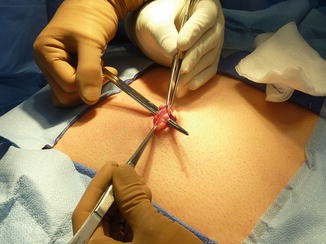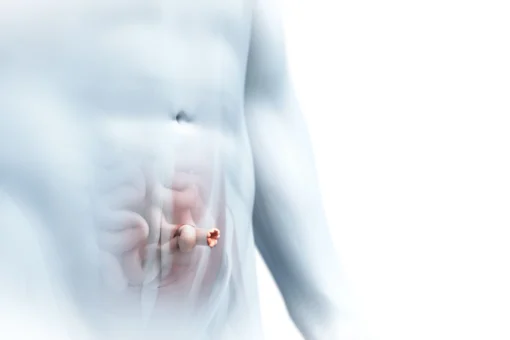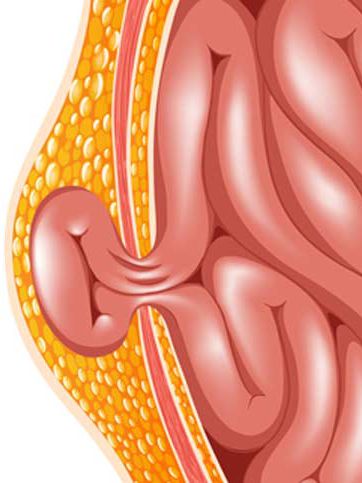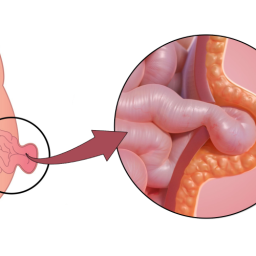
Natural Methods for Treating Umbilical Hernia
Some individuals prefer to try natural treatments to manage their umbilical hernia, especially in mild cases where surgery might not be necessary. These methods may help reduce discomfort or prevent the hernia from worsening.
a. Lifestyle Modifications
Adopting healthier habits can help reduce the strain on the abdominal wall and prevent further complications.
Dietary Changes:
Eating a balanced diet that is rich in fiber can help prevent constipation, which can put added pressure on the abdominal wall. Staying hydrated and consuming foods that promote digestive health can alleviate strain caused by straining during bowel movements.
Maintaining a Healthy Weight:
Excess weight can increase pressure on the abdominal muscles, exacerbating the hernia. Maintaining a healthy weight through proper diet and exercise can reduce the risk of the hernia worsening.
b. Gentle Exercise and Core Strengthening

While strenuous activities should be avoided, gentle exercise can help strengthen the muscles surrounding the hernia, reducing the risk of further damage.
Core Strengthening Exercises:
Exercises like pelvic tilts, gentle leg raises, and low-impact activities such as walking or swimming can help strengthen the abdominal muscles without putting too much strain on the hernia. It is important to avoid exercises that involve heavy lifting, twisting motions, or intense abdominal strain.
c. Using Hernia Belts or Support Garments
Supportive belts or garments are designed to provide additional support to the abdominal muscles and can help reduce pain and discomfort caused by an umbilical hernia. These belts are particularly useful for individuals with larger hernias or those who experience pain when standing or walking for long periods.
Alternative Methods for Treating Umbilical Hernia
Alternative therapies can be used alongside conventional treatments to manage symptoms and potentially accelerate healing. These methods are generally less invasive and may offer some relief for individuals seeking natural alternatives.
a. Herbal Remedies
Certain herbs are believed to have anti-inflammatory and soothing properties that can help reduce swelling and discomfort caused by an umbilical hernia.
Examples of Herbs:
- Turmeric: Known for its anti-inflammatory properties, turmeric may help reduce swelling and discomfort in the affected area.
- Ginger: This herb is commonly used to aid digestion and reduce inflammation. It may help alleviate discomfort caused by the hernia.
- Aloe Vera: Aloe vera is often used topically to soothe the skin and reduce swelling. It can be applied to the area around the hernia for temporary relief.
Before using any herbs or supplements, it is important to consult with a healthcare provider to ensure their safety and effectiveness.
b. Acupressure and Acupuncture
Acupressure and acupuncture are traditional Chinese medicine practices that involve stimulating specific points on the body to relieve pain and promote healing.

- Acupressure: This involves applying pressure to specific points on the body to reduce pain and promote relaxation. Some individuals with umbilical hernias use acupressure to help manage discomfort.
- Acupuncture: Acupuncture is a practice that involves inserting fine needles into specific points on the body. It may help alleviate pain and improve circulation in the abdominal area.
While scientific evidence supporting these treatments for umbilical hernia is limited, many individuals report experiencing relief from symptoms through these practices.
c. Chiropractic Care
Chiropractic adjustments can help improve spinal alignment and reduce muscle tension. For some people, chiropractic care can be beneficial in managing discomfort caused by an umbilical hernia. However, it is important to consult with a chiropractor who has experience working with hernia patients to ensure safe treatment.
Medical Treatments for Umbilical Hernia
In many cases, medical intervention is necessary to address an umbilical hernia, especially if the hernia is causing significant discomfort or complications. Medical treatments generally fall into two categories: nonsurgical treatments and surgical interventions.
a. Non-Surgical Treatment Options

For small, uncomplicated hernias, nonsurgical treatments may be sufficient to manage symptoms. These treatments focus on providing relief from pain and preventing the hernia from worsening.
Hernia Trusses and Belts:
As mentioned earlier, hernia trusses or belts can provide support to the abdominal muscles and alleviate discomfort. These are typically used for mild to moderate hernias that do not require surgery.
Pain Management:
In some cases, over-the-counter pain relievers such as acetaminophen or ibuprofen may be recommended to alleviate pain associated with the hernia. These medications help manage discomfort and reduce inflammation.
Observation:
For small, asymptomatic hernias that do not cause pain or other issues, a “watch-and-wait” approach may be recommended. This involves monitoring the hernia for any changes and only pursuing surgical intervention if symptoms worsen or complications arise.
b. Surgical Treatments
Surgery is often the most effective treatment for an umbilical hernia, especially if the hernia is causing pain, discomfort, or other complications such as strangulation (when the blood supply to the herniated tissue is cut off).
Types of Hernia Surgery:
- Open Hernia Repair:
In this traditional surgical approach, the surgeon makes an incision near the hernia site to push the protruding tissue back into the abdomen. The abdominal wall is then repaired, often with mesh to reinforce the area. - Laparoscopic Hernia Repair:
Laparoscopic surgery is a minimally invasive procedure in which small incisions are made, and a tiny camera is used to guide the surgeon in repairing the hernia. This method generally results in less postoperative pain, shorter recovery times, and smaller scars.
Surgical Risks and Recovery:
While hernia surgery is generally safe, it carries some risks, such as infection, bleeding, and recurrence of the hernia. Recovery typically involves avoiding strenuous activity for several weeks, with full recovery taking several months.
When to Seek Medical Attention
While many individuals with an umbilical hernia experience mild symptoms, some cases may require immediate medical attention. It is important to seek help if any of the following occur:
- Sudden, severe pain at the hernia site
- Inability to reduce the bulge or push the hernia back in
- Signs of strangulation, such as nausea, vomiting, or fever
- Increased swelling or tenderness around the hernia
- Difficulty breathing or swallowing due to pressure from the hernia
Early intervention can help prevent complications and ensure appropriate treatment.
Treating an umbilical hernia involves a combination of natural, alternative, and medical approaches. While natural and alternative methods can help manage symptoms and prevent complications, surgery remains the most effective treatment for moderate to severe cases. It is essential for individuals with an umbilical hernia to consult with their healthcare provider to determine the most appropriate treatment plan based on the severity of their condition and their overall health.
By incorporating lifestyle changes, gentle exercise, and appropriate medical interventions, individuals with an umbilical hernia can manage their condition effectively and reduce the risk of complications.




